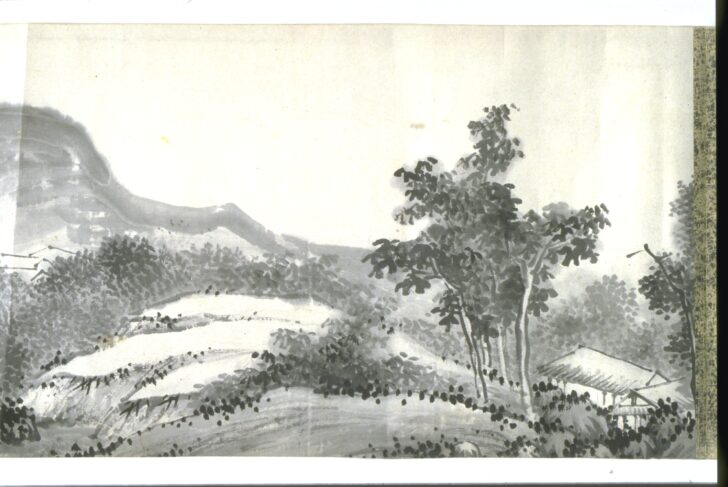Landscape after Shen Zhou (Chinese artist, 1427-1509)
Hine Taizan

Description
The artist after whose work this handscroll is modeled played a pivotal role in the history of Chinese art. Shen Zhou (1427–1509) was not a professional artist but a wealthy landowner and scholar in the southern Chinese city of Suchou. Exposed from youth to a superb collection of older Chinese paintings, he took up painting as a avocation, and often did works in the manner of literati artists of the earlier Yuan dynasty. For Shen and his followers in the Wu school of literati painting, and their audience of like-minded intellectuals, much of the pleasure in painting came from recognizing the many layers of quotation and allusion in “art historical” paintings.
Japanese artists knew of Shen Zhou’s fame as early as the mid-eighteenth century from imported books on Chinese painting theory, but paintings by Shen did not reach Japan until much later. One famous landscape handscroll attributed to Shen in the collection of a Confucian scholar in Nara was sought out and copied by several Japanese painters. This rather free rendering by Hine Taizan retains the overall composition of the original, as well as the flavor of Shen’s relaxed brushwork.
Maribeth Graybill, Senior Curator of Asian Art
"Japanese Visions of China"
9/21/02 - 1/26/03
Subject Matter:
The artist after whose work this handscroll is modeled played a pivotal role in the history of Chinese art. Japanese artists knew of Shen Zhou’s (1427–1509) fame as early as the mid-eighteenth century from imported books on Chinese painting theory, but paintings by Shen did not reach Japan until much later. One famous landscape handscroll attributed to Shen in the collection of a Confucian scholar in Nara was sought out and copied by several Japanese painters. This rather free rendering by Hine Taizan retains the overall composition of the original, as well as the flavor of Shen’s relaxed brushwork.
Maribeth Graybill, Senior Curator of Asian Art
"Japanese Visions of China"
9/21/02 - 1/26/03
Physical Description:
In the bottom right corner of the painting, there are two buildings placed at the bottom of a hill that has plants growing on it. Next to them is a small cluster of trees, close enough where their trunks are visible. In the distance, there are more trees running across the painting, however, only the foliage is visible. The leaves on these trees stand out because each individual leaf is inked. There is another small cluster of buildings on the far left of the painting behind these trees. Further in the distance are mountains.
Usage Rights:
If you are interested in using an image for a publication, please visit https://umma.umich.edu/request-image/ for more information and to fill out the online Image Rights and Reproductions Request Form.